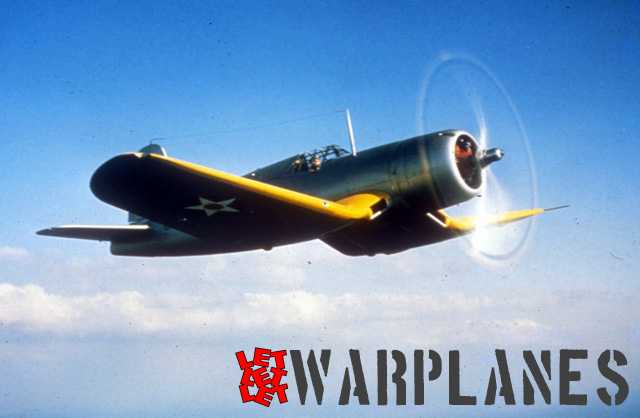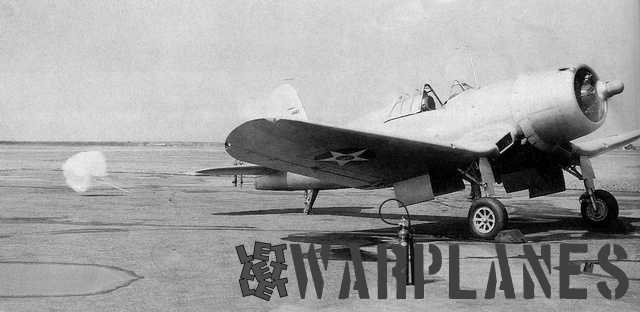Vought XF4U-1 Corsair
In February 1938 the U.S. Navy Bureau of Aeronautics published two requests for proposal for twin-engined and single-engined fighters. For the single-engined fighter the Navy requested the maximum obtainable speed, and a stalling speed not higher than 70 miles per hour. A range of 1,000 miles was specified. The fighter had to carry four guns, or three with increased ammunition. Provision had to be made for anti-aircraft bombs to be carried in the wing. These small bombs would, according to thinking in the 1930s, be dropped on enemy aircraft formations.

In June 1938, the U.S. Navy signed a contract with Vought for a prototype, the XF4U-1, BuNo 1443. The Corsair design team was headed up by Rex Beisel. After mock-up inspection in February 1939, construction of the XF4U-1 powered by an XR-2800-4 prototype of the Pratt & Whitney Double Wasp twin-row, 18-cylinder radial engine, rated at 1,805 hp went ahead quickly. When the prototype was built it had the biggest and most powerful engine, largest propeller and probably the largest wing on any fighter to date. The first flight of the XF4U-1 was made on 29 May 1940, with Lyman A. Bullard, Jr. at the controls. The maiden flight proceeded normally until a hurried landing was made when the elevator trim tabs failed because of flutter.
On 1 October, the XF4U-1 became the first single-engine U.S. fighter to fly faster than 400 mph by setting an average ground speed of 405 miles per hour during a flight from Stratford to Hartford.The twin-engine Lockheed P-38 Lightning had flown over 400 mph in January–February 1939. The XF4U-1 also had an excellent rate of climb but testing revealed that some requirements would have to be rewritten. In full-power dive tests, speeds of up to 550 miles per hour were achieved but not without damage to the control surfaces and access panels and in one case, an engine failure. The spin recovery standards also had to be relaxed as recovery from the required two-turn spin proved impossible without resorting to an anti-spin chute. The problems clearly meant delays in getting the type into production.

Reports coming back from the war in Europe indicated that an armament of two .30 in (mounted in engine cowling) and two .50 in machine guns (one in each outer wing panel) was insufficient. The U.S. Navy’s November 1940 production proposals specified heavier armament. The increased armament consisted of three .50 caliber machine guns mounted in each wing. This improvement greatly increased the ability of the Corsair to effectively shoot down enemy aircraft.
Formal U.S. Navy acceptance trials for the XF4U-1 began in February 1941. The Navy entered into a letter of intent on 3 March 1941, received Vought’s production proposal on 2 April and awarded Vought a contract for 584 F4U-1 fighters, which were given the name “Corsair”, on 30 June of the same year. The first production F4U-1 performed its initial flight a year later, on 24 June 1942. It was a remarkable achievement for Vought; compared to land-based counterparts, carrier aircraft are “overbuilt” and heavier, to withstand the extreme stress of deck landings.
Srecko Bradic
Text source- Wikipedia; Images- NASA and USN

















